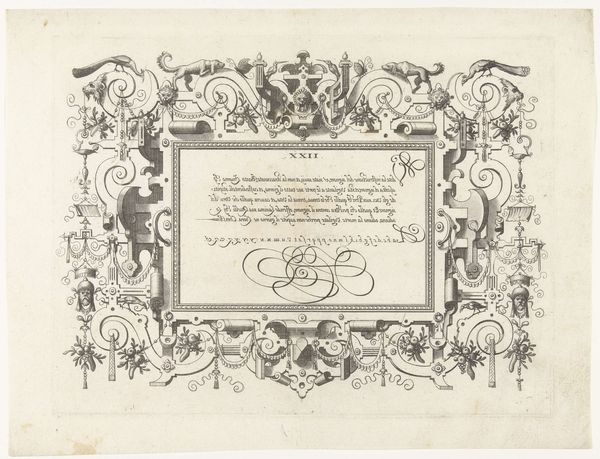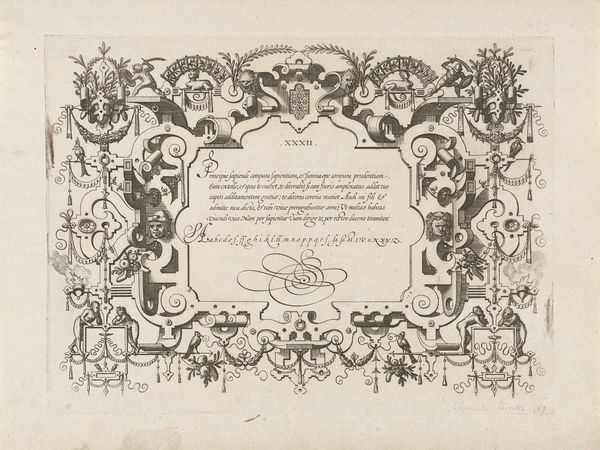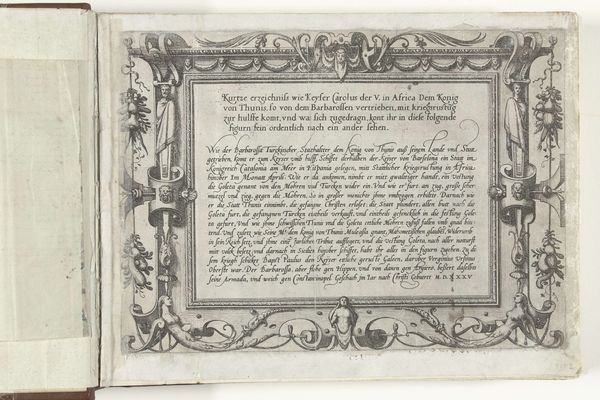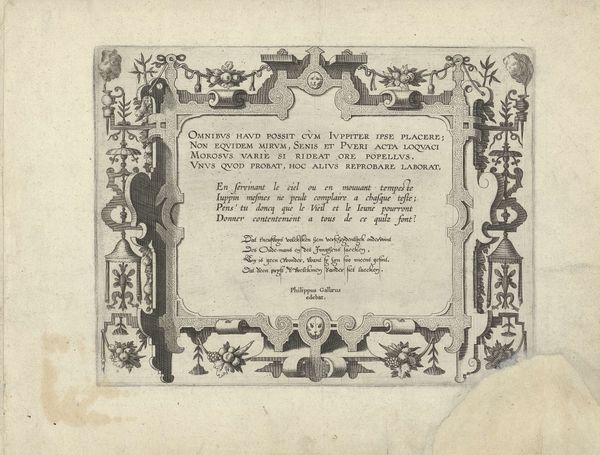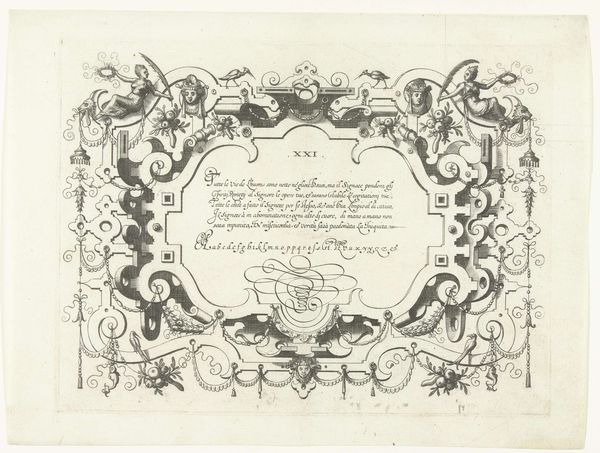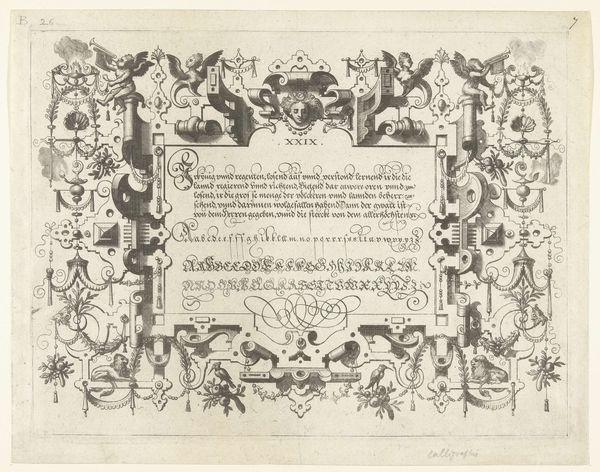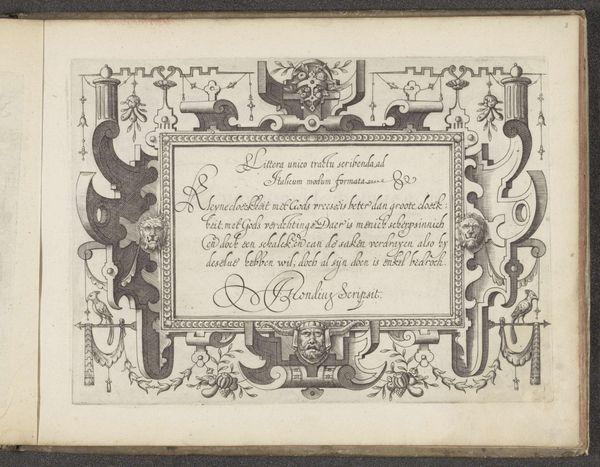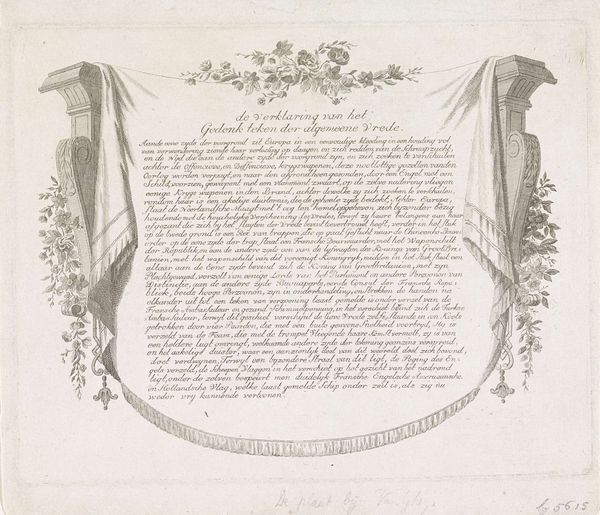
Dedicatie aan kardinaal Fernando De' Medici met ornamenten 1585 - 1586
0:00
0:00
drawing, graphic-art, ornament, print, paper, ink, engraving
#
portrait
#
drawing
#
graphic-art
#
aged paper
#
ornament
#
ink paper printed
# print
#
old engraving style
#
paper
#
11_renaissance
#
personal sketchbook
#
ink
#
pen-ink sketch
#
ink colored
#
pen and pencil
#
pen work
#
sketchbook drawing
#
italian-renaissance
#
sketchbook art
#
engraving
Dimensions: width 258 mm, height 190 mm
Copyright: Rijks Museum: Open Domain
This dedication to Cardinal Fernando De' Medici, now at the Rijksmuseum, was made by Philips Galle in the late 16th century. It's an etching, meaning the design was bitten into a metal plate with acid, then printed. Look closely and you'll see the incredible detail achieved by the engraver. The image has ornamentations populated with cherubs, acanthus scrolls, and grotesques. The central inscription is dedicated to Ferdinando Medici. While prints like this may seem far removed from manual labor, they depended on highly skilled artisans like Galle. The engraver needed to master techniques of line making and shading to create the illusion of form and texture, thus enhancing the status of the dedicatee. This print shows us that even seemingly mass-produced images involve intense labor and skill. By understanding the processes behind such works, we appreciate the cultural values they embody, challenging any strict division between art and craft.
Comments
No comments
Be the first to comment and join the conversation on the ultimate creative platform.
